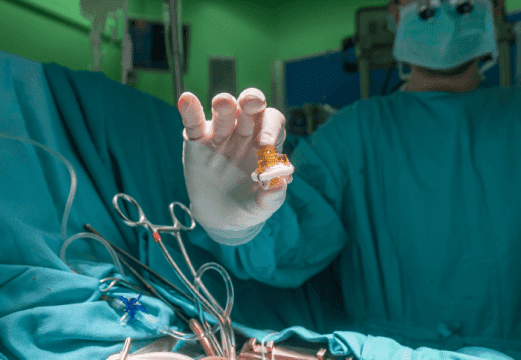Tricuspid regurgitation (TR) is associated to fatigue and peripheral edema, and medical treatment with diuretics has a limited impact. Tricuspid valve surgery is complex and entails 8 to 10% mortality.

Edge-to-edge repair with TriClip has been shown beneficial in many studies, even though mainly short term. To date, we still lack data on mid and long term follow-up.
The TRILUMINATE included 98 patients with moderate or severe symptomatic TR at high surgical risk, with no left sided heart failure or pulmonary disease with severe pulmonary hypertension.
Patient mean age was 77, 66 were women. Mean EuroSCORE was 8.3. All patients were in functional class III-IV and presented atrial fibrillation (92%), kidney function deterioration (42%), diabetes (24%), prior mitral valve intervention (31%), and 14 had a pacemaker, AIC or CRT devices.
The most frequent TR was torrential, followed by severe, massive and, less frequently, moderate. Right ventricular ejection fraction was 36%, end diastolic diameter was 53 mm and vena cava diameter 23 mm.
Read also: Should We Withdraw Anticoagulation Before TAVR?
At three-year follow-up, there was sustained TR reduction in 79% of patients, as well as significant reduction of the contracted vein, effective regurgitant orifice and regurgitation volume. There was also improved functional class and quality of life, with reduced re-hospitalization rate after implantation.
All-cause mortality at 3 years was 25%. There were 10 cases of bleeding, 4 of stroke, 1 of new liver failure, and 2 in need for pacemaker.
Conclusion
The TRILUMINATE has shown edge-to-edge repair with TriClip is safe and effective, has sustained benefits for symptomatic patients with moderate to severe tricuspid valve failure, according to the available data
Original Title: Percutaneous Edge-to-Edge Repair for Tricuspid Regurgitation 3-Year Outcomes From the TRILUMINATE Study.
Reference: Georg Nickenig, et al. J Am Coll Cardiol Intv 2024 Artircle in press.
Subscribe to our weekly newsletter
Get the latest scientific articles on interventional cardiology





